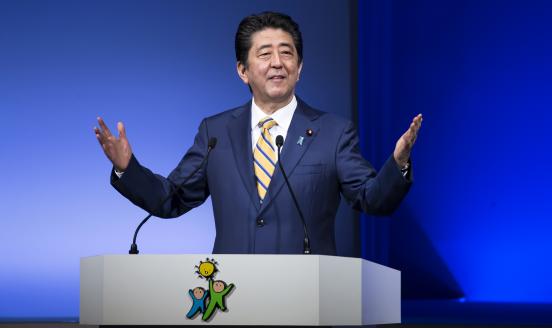Japanese banks and US$ liquidity: Squeezed between expensive deposits and the BoJ
For the last few years, Japanese banks have aggressively expanded their assets overseas, which has helped increased their stubbornly low profitability
This op-ed was originally published in Asian Banking & Finance.

In fact, US$ liquidity has been ebbing towards tightness, partially because of the reform of the US money market fund and more is to come as the FED hikes rates.
The major source of US$ funding for Japanese banks used to be the US money market funds (MMF), but with its reform last year, the liquidity has dried up massive so that Japanese banks have turned to other sources of US$ liquidity. The reason for the increase in the cost of funding is not only that the LIBOR is already discounting incoming FED hikes but also that the cost of Yen-US$ cross-currency swaps has surged.
The most important source of US$ liquidity for Japanese banks now is wholesale US$ deposits but the cost of funding has also gone quite rapidly. Against such background, the Bank of Japan has been offering limited amounts of US$ liquidity through different facilities.
The first one is the BoJ’s Growth Program, which is designed to offer US$ liquidity to Japanese banks to expand their overseas operations but within a limit and only for growth-enhancing lending. The demand has been so large that the BoJ has had to double the ceiling of US$ to be granted since July 2016.
The second program is the US$ Funds Supplying Operations, under which Japanese banks can borrow US$ up to three months, which is funded through a US$-JP¥ swap agreement between the BoJ and the Fed. In July 2016, the BoJ even introduced a new securities lending facility so that banks can borrow JGBs from the BoJ to use them as collateral for the US$ Funds Operations.
Although the outstanding amount is clearly lower than the peak of the European debt crisis in 2011, banks have actively borrowed US$ from the BoJ before the US MMF reform took place.
The outlook is certainly not brighter for Japanese banks, not only because of the expected tightening by the FED but their liquidity requirements will become tighter with the introduction of the Net Stable Funding Ratio by 2018. Beyond the liquidity issues, there are two additional risks related to their overseas asset growth strategy, namely maturity and interest rate risks.
In conclusion, the combination of tighter liquidity regulations together with higher US$ funding costs, Japanese banks might be forced to review what has so far been quite a successful business model to push a stubbornly low profitability, namely that of expanding their US$ assets.



